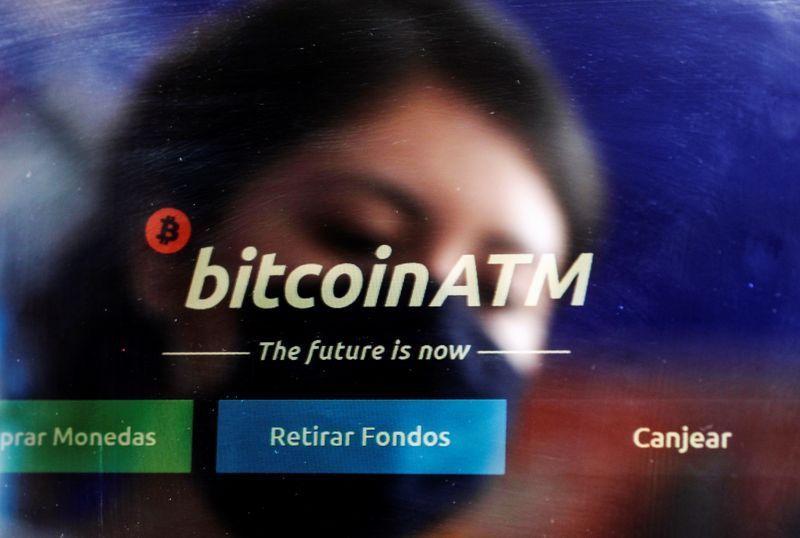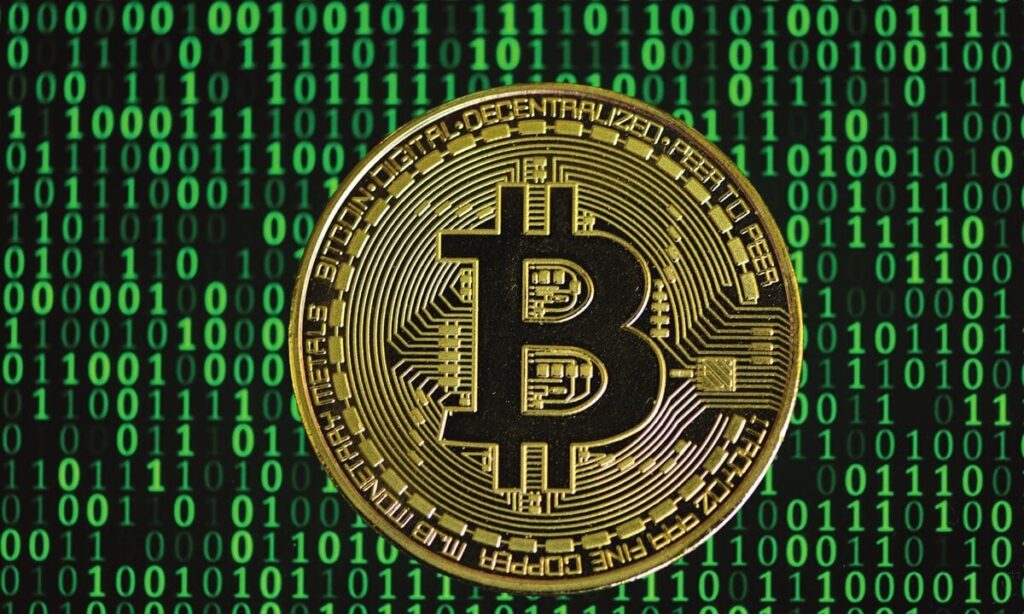MEXICO CITY — In April 2019, Mexican police arrested suspected human trafficker Ignacio Santoyo in a plush area of the Caribbean resort of Playa del Carmen after linking him to a prostitution racket extending across Latin America.
Yet it was not the 2,000 women Santoyo is alleged to have blackmailed and sexually exploited that ultimately led to his capture, but the bitcoin he is suspected of using to help launder the proceeds of his operations, officials said.
The cryptocurrency is emerging as a new front in Latin America’s struggle against gangs battling for control of vast criminal markets for sex, drugs, guns and people, according to law enforcement authorities.
“There’s a transition to committing crimes in cyberspace, like acquiring cryptocurrencies to launder money … and the pandemic is accelerating it,” said Santiago Nieto, head of the Mexican finance ministry’s financial intelligence unit (UIF).

Neither Santoyo, who is in custody, nor lawyers representing him could be reached for comment, and they have not commented publicly on the case in the past. The Mexican attorney general’s office declined to comment while the case remained open.
Santoyo’s arrest represented an early success for a new law in Mexico – one of only two nations in Latin America, with Brazil, to enact such legislation – that seeks to tackle the intractable problem of how law agencies can track the use of bitcoin and other cryptocurrencies designed to anonymize users.
The law requires all registered cryptocurrency trading platforms to report transfers above 56,000 pesos ($2,830). It was passed in 2018 but it took many months to implement the system, which is still a work in progress.
Bitcoin’s use to launder money is particularly increasing among drug gangs such as the Jalisco New Generation Cartel (CJNG) and the Sinaloa Cartel of captured kingpin Joaquin “El Chapo” Guzman, U.S. and Mexican authorities say.
Mexican President Andres Manuel Lopez Obrador has faced record levels of gang-fueled violence during his first two years in office, and the prospect of cartels hiding their profits in lightly-regulated spaces is a major concern.
The sums involved in the few cases uncovered are typically thousands or tens of thousands of dollars. They represent a drop in the ocean compared with organized crime’s hard cash laundry – estimated at $25 billion a year in Mexico alone, according to the government and financial-intelligence firms.
Yet larger sums have begun to crop up across the region over the last three years, with a team of international police breaking up three Colombian drug gangs laundering millions of dollars via cryptocurrencies, authorities say. In Mexico, the hope is that the new rules will help snare big fish.
‘BANDIDOS REVOLUTION’
The only thing tougher than smuggling drugs across borders is getting the profits back to cartels, officials say. Cash is heavy, and transporting it exposes traffickers to high risk. Putting it into banking systems geared to detect dirty money is perilous, too.
UIF chief Nieto said criminals typically split their illicit cash into small amounts and deposited them in various bank accounts, a technique known as “smurfing”. The threshold for banking transactions that raise red flags is $7,500.
They then use those accounts to buy a series of small amounts of bitcoin online, he added, obscuring the origin of the money and allowing them to pay associates elsewhere in the world.
In Santoyo’s case, authorities who had been pursuing him for months said they finally tracked him down after he bought enough bitcoin to trigger an alert under the new law. Moreover, when making his transactions via a registered platform, Santoyo left personal details including his phone number and address.
Between May and November 2018, Santoyo and his sister acquired some 441,000 pesos ($22,260) in bitcoin between them on Bitso, a trading platform in Mexico and Argentina, according to government records seen by Reuters.
Bitso, one of 11 registered crypto trading platforms in Mexico, declined to comment.
Mexican authorities also have their sights set on “Bandidos revolution team”, a gang federal prosecutors suspect of stealing millions of dollars through cyber attacks on large banks.
In May 2019, authorities detained suspected gang leader Hector Ortiz in the central state of Guanajuato after he spent “tens of thousands of dollars” on bitcoin.
That triggered the bitcoin threshold sensor, enabling investigators to trace Ortiz via his phone.
Neither Ortiz nor lawyers representing him could be reached for comment. The Mexican attorney general’s office declined to comment because the case remains open.
DELVING INTO DARK WEB
Rolando Rosas, head of the Cyber Investigations Unit (UICOT) at the Mexican attorney general’s office, said it was tough to track criminals’ use of bitcoin, even with the new law.
UICOT has about 120 people on its staff. But to be competitive, it needs about four times that, he added.
The work is painstaking, and often frustrating.
The new law has led to 1,033 bitcoin threshold alerts being triggered so far this year. Investigators must chase up each one to check if it could be suspicious and whether the user is linked to any criminal behavior or cartels.
Even then, such a system can only identify transactions with registered trading companies. Rosas acknowledged his team had limited visibility of dealings in the dark web and unregulated platforms, which U.S. and Latin American officials say mask the true scale of laundering.
About 98% of all Mexico’s transactions above the 56,000-peso threshold in 2020 were flagged by one registered crypto platform, in the CJNG cartel’s home state of Jalisco, according to government data seen by Reuters.
That, said UIF chief Nieto, suggested the CJNG could be active in money laundering via cryptocurrencies. But it is too early to estimate how much money is involved in Mexico’s crypto laundry because data is still scarce, he added.
Tomas Alvarez, general director of crypto platform Volabit, told Reuters his company was the one referred to in the government data, but he denied any relationship with organized crime.
“It is a mistake (…) to assume that since the alerts are generated by a company based in Jalisco, they must correspond to residents of Jalisco,” said Alvarez.
“Volabit is a digital platform; we have users from all over the country. In fact, most of the reports are not from users who live in Jalisco. If our offices were in Mexico City they would say that 98% of the reports come from a company registered in Mexico City,” he added.
In a sign of the lengths organized crime is going to avoid moving hard cash, U.S. officials have told Reuters that cartels are also turning to Chinese “money brokers” who use burner phones and Chinese banking apps to move funds.
A drop in seizures of hard currency, from $741 million in 2011 to $234 million in 2018, suggests newer technologies including cryptocurrency laundering are gaining ground, according to a U.S. Drug Enforcement Agency (DEA) report published in January this year. Most of the money came from Colombian and Mexican cartels, it said.
The DEA told Reuters the use of digital currencies by such cartels – or Transnational Criminal Organizations (TCOs)- was an “emerging and increasing trend to launder illicit proceeds”.
“Both Mexican and Colombian TCOs are increasing their use of virtual currency because of the anonymity and speed of transactions,” said spokesman Michael Miller. “It is believed the use of virtual currency will only increase in the future.”
($1 = 19.8 Mexican pesos)
—REUTERS
Reporting by Diego Ore; Editing by Dave Graham, Pravin Char and Tom Brown
Our Standards: The Thomson Reuters Trust Principles.



